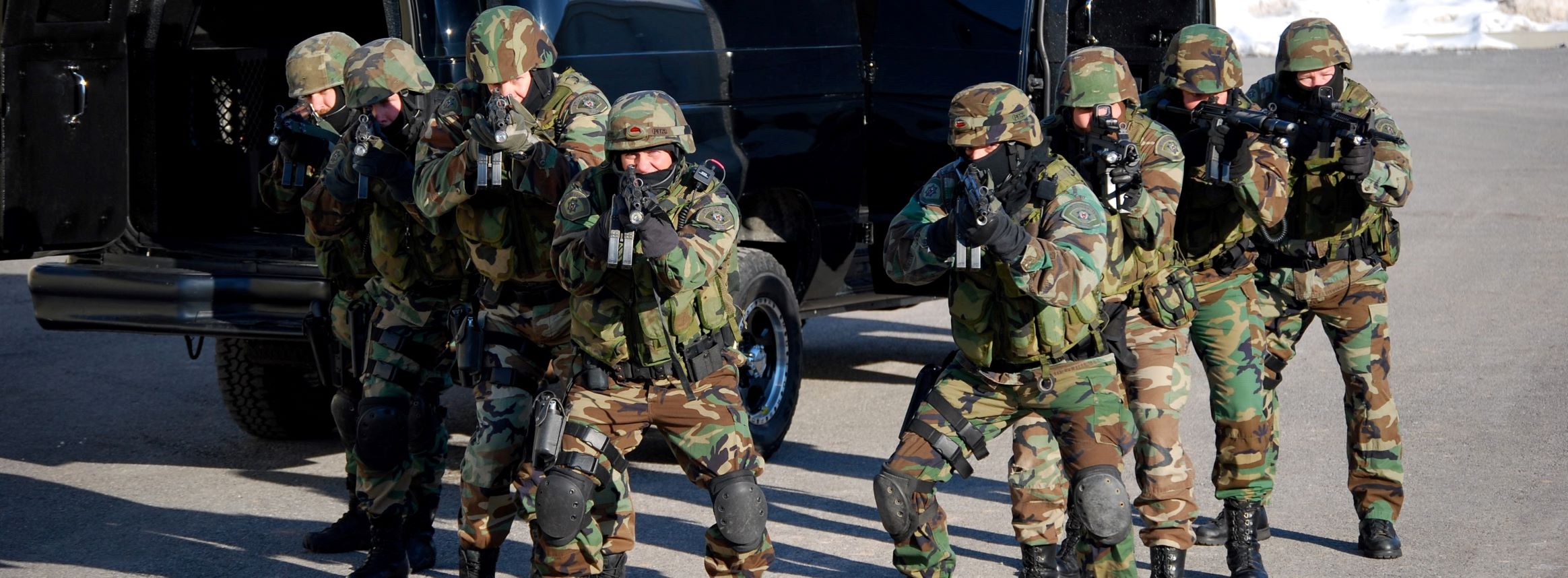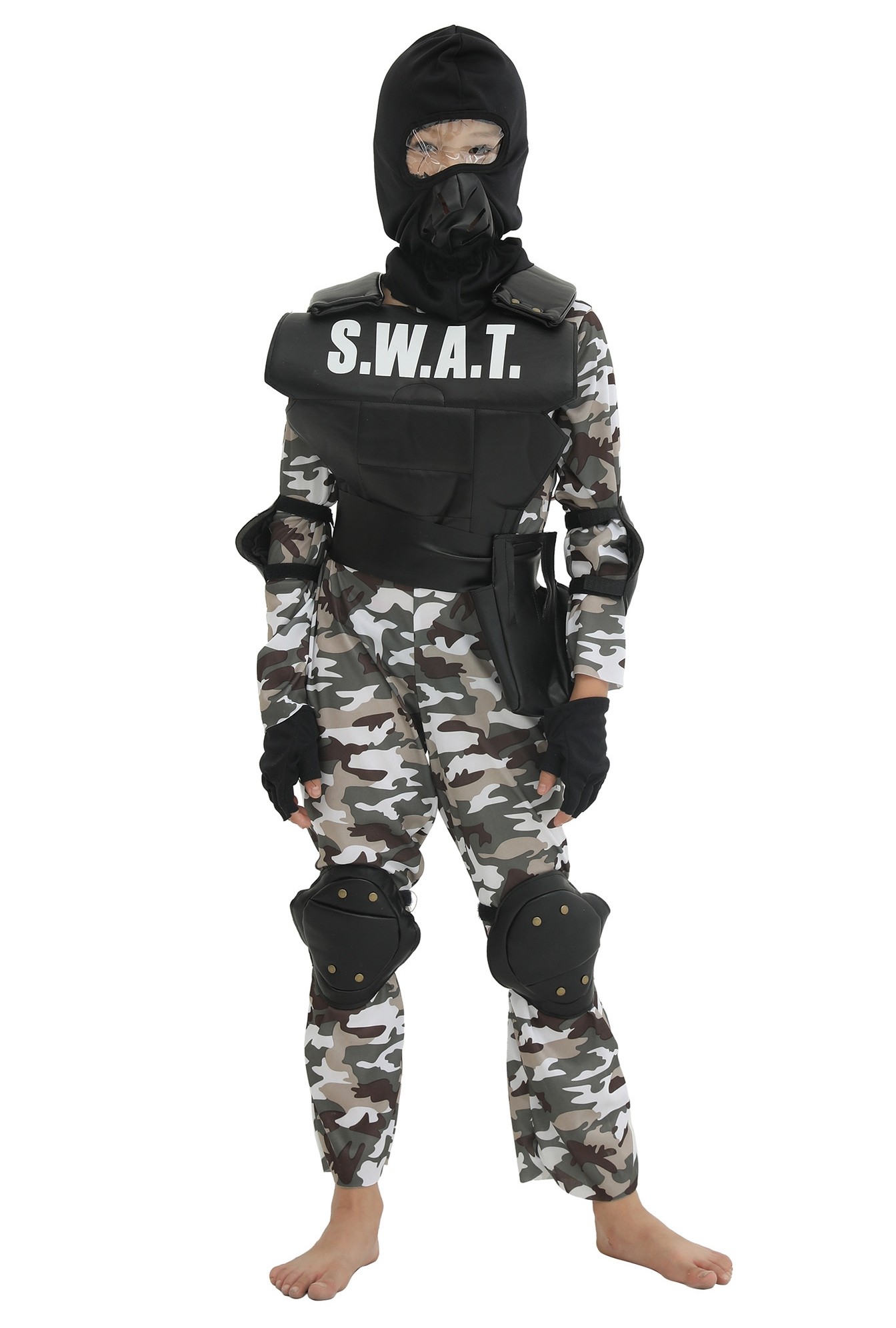Sawt Military - This article needs to be updated. Please help update this article to reflect any correct or newly available information. (January 2017)
Although they were first created in the 1960s to handle riots or violent conflicts with criminals, the number and use of SWAT teams grew in the 1980s and 1990s during the war on medicine and later after the September 11th attacks. During 2005 in the United States, SWAT teams were deployed 50,000 times a year, about 80% of the time to conduct searches, mostly for medical purposes. As of 2015, this number has increased to nearly 80,000 per year.
Sawt Military

SWAT teams are increasingly equipped with military-style equipment and trained to deal with counter-terrorism threats, crowd control, hostage taking and situations beyond the capabilities of ordinary law enforcement, sometimes "high risk".
At Least 55 Militants Killed In Swat, Army Sources Say
SWAT units are often equipped with a wide range of specialized weapons, including assault rifles, submachine guns, riot rifles, sniper rifles, riot guns, AGTS control units, smoke rounds, stun guns, and sting guns. In addition, they can use special equipment to covertly determine the location of suspects within closed structures, including loitering, ballistic targets, tri-tools, armored vehicles, thermal and night vision devices, fiber-optic cameras, and motion detectors.
SWAT: a designated law enforcement team whose members are trained, selected, trained, equipped, and assigned to respond to serious incidents involving threats to public safety that would otherwise be handled by law enforcement agencies and/or an investigative unit. will overcome power. . History Political uprisings and conflicts of the 1960s
Platoon "D" Platoon of the LAPD Metropolitan Division is one of the most prominent SWAT units in the world and was the second SWAT company in the United States after the Philadelphia Police Department in 1964.
According to the Historical Dictionary of Law Enforcement, the word "SWAT" was used as an acronym for "Special Weapons and Tactics" for the 100-man special unit established by the Philadelphia Police Department in 1964 in response to riots at banks. ROBBERY The purpose of the unit was to respond quickly and decisively to bank robberies, employing several specially trained officers with a large number of firearms at their disposal. The technique has worked and has been used to solve other incidents involving heavily armed criminals.
Tactical Equipment Investments For Swat Officers
Los Angeles Police Department (LAPD) Inspector Daryl Gates said he first adopted the "SWAT" acronym for "Special Weapons Assault Team" in 1967, but later adopted "Special Weapons and Tactics" at the suggestion of Deputy Chief Edward. M. Davis.
The LAPD is known as the SWAT team for several reasons. After the racially charged Watts Riots in Los Angeles in August 1965, the LAPD began to consider policies that might deal with riots, riots, or mass urban violence. Darryl Gates, who led the LAPD's response to the riots, later wrote that the police were not at one time a crowd, but "attacking the people from all sides."
A New York Christian University professor writes that SWAT teams were originally intended as "urban counterinsurgency protection."

Another reason for the creation of SWAT teams was the fear of isolated or blocked guns that could overtake the police in the release, as happened with Charles Whitman in Austin.
Kids Swat Military Costume
After the LAPD established its SWAT team, many law enforcement agencies in the United States established their own special units under various names. Gates explained in his autobiography: My Life in the LAPD that SWAT procedures or related and often unique equipment did not explain; But in order to support the underlying belief, he tried to educate his people to it and generally encourage them morally.
In California Delano is an agricultural company on the border of Kern and Tulare counties in the San Joaquin Valley north of Los Angeles. At the time, the Union of Firm Workers of America, led by Cesar Chavez, held frequent protests in Delano during a strike that lasted more than five years.
Although the attack never turned violent, the Delano Police Department responded by forming ad-hoc SWAT-type units that involved crowd and riot control, sniper skills and surveillance.
Television news stations and print media broadcast live and delayed reports of these events across the United States. LAPD officers, seeing these radios, contacted Delano and asked about the program. Officer Delano was allowed to observe the Department's special weapons and combat units in action, and later took what he learned to Los Angeles, where he used and expanded his knowledge to form the LAPD's first SWAT unit.
Nemlec Swat Documents Give Ugly Snapshot Of Police Militarization
John Nelson was the officer who came up with the idea of creating a specially trained and trained unit in the LAPD, whose purpose was to respond to and handle the complex situations that fall into the transmission of police incidents. Inspector Gate approved the idea and formed a small group of volunteer teachers. This first SWAT unit initially consisted of fifty-four meter squads with a total of sixty-six. These officials were given special status and privileges and had to attend special monthly educational sessions. The unit also served as a security unit for capital facilities during a civil uprising. LAPD SWAT units were established as "D Platoon" in the Metro Division.
The first police powers and tactics used by SWAT teams were passed in 1967-8 with support from Republican House Representative Donald Santarelli. The law was promoted in the context of fear of civil unrest, national uprisings, the Black Panther Party, and the emerging war on drugs.
The first notable LAPD SWAT deployment was on December 9, 1969, when an attempt by the LAPD to serve as a deterrent against the Black Panthers led to a four-hour standoff at Los Angeles headquarters at 41st and Ctral, in which more than 5,000 rounds of fire were fired between police and The Panthers were exchanged. During the launch, Daryl Gates called the Department of Defense to request and obtain licenses to use the launcher; But I didn't use it. The Panthers almost surrendered with four Panthers and four leaders wounded. The six Panthers arrested are charged with the most serious charges of conspiracy to kill the officers, as it is shown that they acted in self-defence.

On the afternoon of May 17, 1974, the Symbian Liberation Army (SLA), a group of heavily armed guerrillas, barricaded themselves in a residence on East 54th Street at Compton Avenue in Los Angeles. Coverage of the investment was broadcast to millions on television and radio and appeared in the world press days later. SWAT teams encounter hours-long gun battles with the SLA; No policemen were injured, but six members of the SLA died in the clash, which caused the house to catch fire and burn to the ground.
What Is Swat?
During the SLA deployment, SWAT teams were organized into six teams of 10 men, with each team further divided into two teams of five men, called Elemts. Let's choose a leader, two attackers, a scout and a guard. The usual complement of weapons was a sniper rifle (a .243-type rifle-action rifle, based on the rifle used by soldiers in archery), two .223-caliber semi-automatic rifles and two rifles. SWAT officers are also returning to their job. Standard gear included a first aid kit, gloves and a military gas mask. At a time when officers were typically issued six-shot revolvers and handguns, equipping police with semi-automatic rifles was a significant change. And the Symbionese Liberation Army, heavily armed with a target, brought in SWAT teams with body armor and a variety of handguns.
A report released by the LAPD after they fired the SLA offers one of the few first-hand accounts of the department's SWAT history, operations and organization. On page 100 of the report, the department cites four techniques that prompted the development of SWAT. These include riots like the Watts riots, which forced the LAPD and other police agencies into strategic situations in the 1960s for which they were unprepared; the emergence of snipers as a challenge to civil order; Political assassins; and the threat of urban guerrilla warfare through militant groups "The unpredictability of snipers and the anticipation of their responsibility by the police to a normal response increases the likelihood of officers being killed or wounded. Conventionally equipped commanders engage in guerrilla-trained militant groups, resulting in high-level incidents. And the guerrillas escape." To deal with these situations of urban violence, the LAPD formed SWAT, the report noted. The report states on page 109, "SWAT's purpose is to provide security, support, security, power, and deliver capital in high personal risk situations where a special contingency plan is required."
The U.S. Air Force's 37th Training Wing's Emergency Services Team uses a team to lift a ramp to build a target during a training exercise April 24, 2007 at Lackland Air Force Base, Texas.
In 1981 US
File:pakistan Military In Swat
Sawt beirut, sawt el ghad live, sawt beirut international, sawt lebnan, sawt el ghad, sawt beirut listen live, sawt el atlas, the voice ahla sawt, sawt el mada, sawt comic, sawt, sawt definition
0 Comments